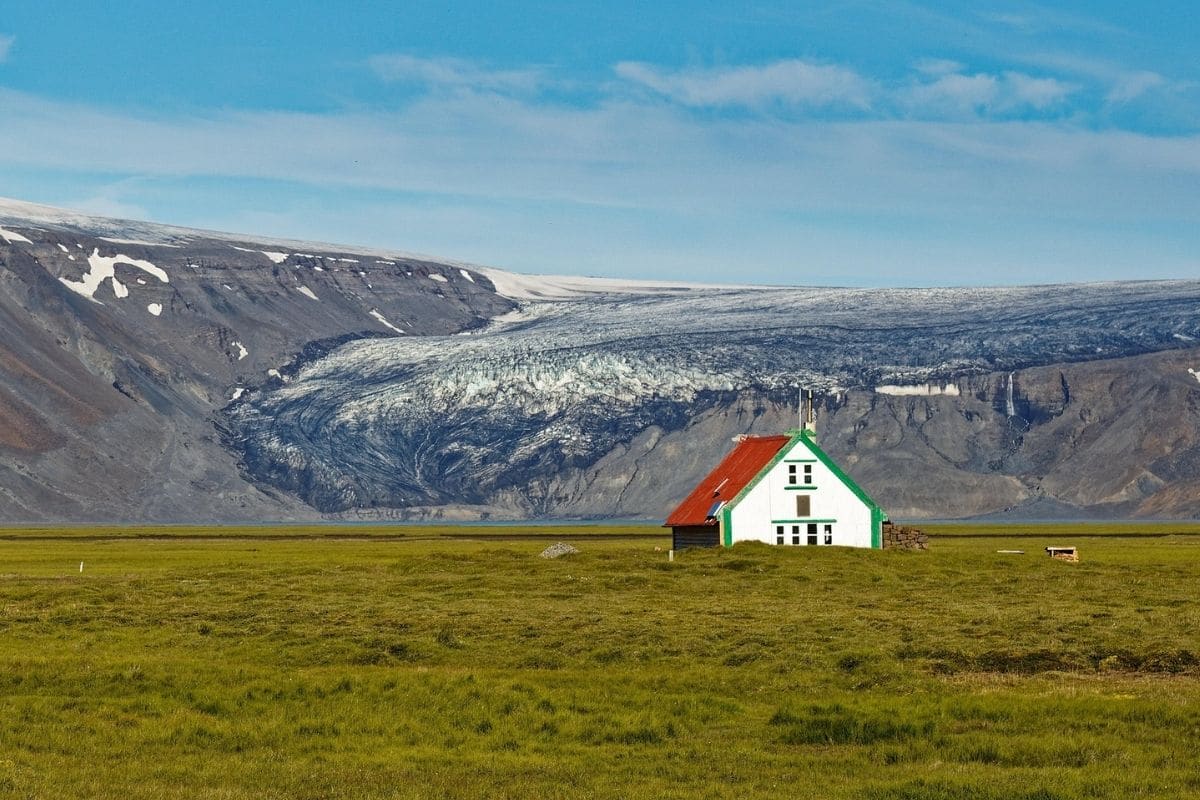
The glaciers started melting faster in the 1990s, but that melt slowed down from 2011. And the blue blob seems to underlie it.
This is what an international team of researchers – including scientists from Utrecht University and TU Delft – writes in the magazine Geophysical Research Letters† The study provides more insight into the as yet difficult to explain behavior of the Icelandic glaciers in response to global warming.
enigmatic
It is now a well-known story: due to rising temperatures, many glaciers and ice caps are experiencing mass loss. This means that in a given period more ice is melting than is added in the same period – due to snowfall. And the Icelandic glaciers also had to deal with this mass loss caused by climate change in the mid-1990s, says researcher Brice Noël, affiliated with Utrecht University. “In the previous period, the amount of snowfall approximately compensated for the amount of melt, so there was no net loss of mass. But that changed in the mid-1990s.” From that moment on, more ice was lost through melt in the summer than was gained through snowfall in the winter. “It resulted in an annual mass loss of 11 gigatons (or 1 cubic kilometer of water) between 1995 and 2010. But – and this was very surprising – after 2011 the mass loss started to decrease; it actually halved, to about 5 gigatons of ice per year.” It was quite puzzling. “None of the other Arctic glaciers experienced such a slowing of the melt,” Noël said. “For example, we saw the mass loss of the Greenland ice sheet and the glaciers of Spitsbergen increase in response to the accelerated warming of the Arctic.”
blue blob
For a long time it was unclear how the mysterious behavior of the Icelandic glaciers could be explained, but Noël and colleagues think they can now figure it out. Iceland’s glaciers are melting more slowly because of the blue blob, or the blue blob. “This is an area of colder water in the north Atlantic, south of Greenland,” explains Noël. Scientias.nl from. “In Iceland, the blue blob fights atmospheric warming, which in turn reduces the mass loss of the glaciers.”
The researchers reached that conclusion after comparing the mass loss of Iceland’s glaciers with the temperature of the sea surface. It soon became clear that there was a strong connection between the two. For example, the researchers saw that the sea surface temperature in the blue blob has been falling since 2011. “Icelandic glaciers are strongly influenced by the surrounding oceans and we were able to link the decrease in mass loss to the recent development of the blue blob.”
Mysterious
This seems to have solved the mystery of the Icelandic glaciers. But based on a new mystery: the blue blob. Because that is a rather puzzling phenomenon. “Satellite measurements have shown that there is cooling in the blue blob,” says Noël. “But we cannot yet properly explain the origin of the blue blob. Previous studies have associated the blue blob with weakening of the Atlantic Meridional Overturning Circulation (AMOC), an ocean current that brings warm water from the tropics to the Arctic. A weakening of that flow would result in reduced heat transfer to the blue blob and thus could contribute to the recent cooling.”
temporary
And that cooling is able to slow down the melting of the Icelandic glaciers considerably. But it is a stay of execution, the researchers emphasize in their study. Because climate models indicate that the blue blob does not have eternal life. “To find out whether the blue blob will survive in the future, we used a climate model that simulates the interactions between oceans, atmosphere and land ice worldwide. First, we made sure that the climate model showed the development of the blue blob and the associated delayed melting experienced by Icelandic glaciers since 2011. We then used the model to simulate the climate Iceland would have by the end of this century – if warming continues strongly. And the model shows that the cooling in the blue blob persists until the mid-1950s, slowing down the mass loss of Icelandic glaciers. By the late 1940s, the glaciers could even temporarily return to a situation where they are not losing mass at the bottom. But after the 1950s, the blue blob warms up and the Icelandic glaciers begin to melt again at an accelerated rate. That’s happening so fast that a third of Iceland’s current total ice volume may have been lost by the year 2100.”
Although Iceland’s glaciers don’t hold very much water compared to mighty ice caps like Greenland’s, it’s important to keep a close eye on them, says Noël. “If they melt completely, Iceland’s glaciers could raise global sea levels by 9 millimeters. That may not seem like much compared to the large ice sheets of Greenland and Antarctica. But small glaciers currently contribute greatly to annual sea level rise. A better understanding of the processes that cause these glaciers to melt rapidly is therefore important to better understand the drivers behind future mass loss of larger ice masses.” And what we can do about it. Broadly speaking, there can no longer be any doubt about this. “We need to limit global warming.”
Source material:
†Iceland glaciers melt more slowly due to mysterious North Atlantic ‘blue blob’” – UU
Interview with Brice Noël
Image at the top of this article: Kiwibu (via Pixabay†